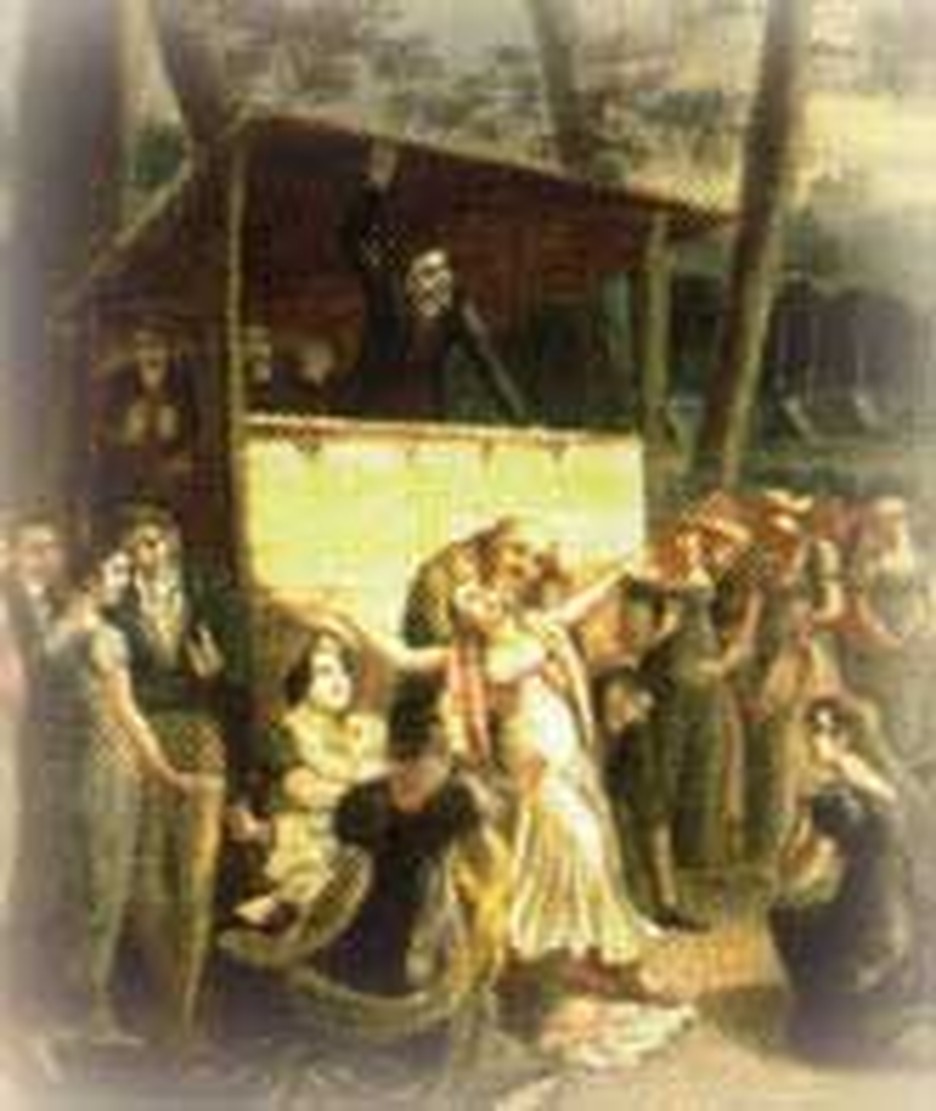
Lord, make it like Cane Ridge." This was the prayer of revivalists across America. Cane Ridge had become the most famous frontier revival.
Revival has often emerged after an intense time of prayer and confession. Cane Ridge was no exception. Recognizing that many people on the Western frontier were indifferent to faith or actively opposed to it, pastors and Christians began to set aside time for prayer that revival might come. Convinced that iniquity impedes revival, many churches tried to clean up their own ranks by removing from fellowship those who had drifted into overt sin.
Revival began in 1800 in Kentucky. Under the exhortations of a fiery preacher named James McGready in Logan County, a woman who for a long time had been seeking assurance of salvation suddenly broke into songs and shouts of joy. People began to weep and sought a similar assurance. News of their new found hope spread like wildfire through Kentucky, and people in nearby regions began to attend the services, thirsting to partake of the Lord's salvation. Several small revivals spread out from that center. But the "main attraction" was still to come.
In those days, Christians used to gather for special communion services in which three or more days of services would be capped by the sharing of the Lord's Supper. So charged was the atmosphere in Kentucky that everyone expected great things when the Presbyterian minister Barton W. Stone scheduled a Communion during the first week of August over two hundred years ago. Instead of the usual hundreds, thousands of people thronged toward Cane Ridge, hungering for a taste of God. Cane Ridge (a small town a day's ride from Lexington in those times of primitive transportation) was inundated with humanity. Many came prepared to camp out, hence the name "Camp Meeting" for such services.
Those who arrived by Friday night may have been disappointed. Nothing visible happened although some spent the entire night in prayer. But on Saturday evening a powerful enthusiasm swept the crowd. Men, women and children shrieked and fainted. Preachers shouted to the crowd and urged repentance. Some of the penitents became hysterical. Lightheadedness was common. Individuals began to jerk. Scoffers stood by and mocked.
Sunday morning began calmly enough with communion. But soon, under the preaching and hymns of a Methodist minister, the crowds grew emotional. Many fell to their knees, crying for forgiveness. People counseled one another on spiritual matters. They sang, shouted, danced, groaned or wept uncontrollably. Some fell into deep comas. Instead of breaking up on Sunday, services continued through the night and into the following week, lasting until this day Thursday August 6, 1801, with as many as 25,000 attending. Thousands confessed the Lord. A year later the excited talk in the area was still about religion.
Bibliography:
- "Camp Meetings and Circuit Riders. Untamed faith on America's Early Frontier." Christian History Magazine (XIV No. 1).
- Eerdman's Handbook to Christianity in America. Editor Mark Noll. Grand Rapids, Michigan: William B. Eerdmans, 1983.
- McLoughlin, William G. Revivals, Awakenings and Reform. Chicago: University of Chicago, 1978.
- Walker, Ken. "Christians Honor 200th Anniversary of Cane Ridge Revival in Kentucky." Charisma (Nov. 2001) 24 - 28.
- Various internet articles.
Last updated April, 2007.








